Abstract
Pigeons keypecked on a two-key procedure in which their choice ratios during one time period determined the reinforcement rates assigned to each key during the next period (Vaughan, 1981). During each of four phases, which differed in the reinforcement rates they provided for different choice ratios, the duration of these periods was four minutes, duplicating one condition from Vaughan's study. During the other four phases, these periods lasted six seconds. When these periods were long, the results were similar to Vaughan's and appeared compatible with melioration theory. But when these periods were short, the data were consistent with molecular maximizing (see Silberberg & Ziriax, 1982) and were incompatible with melioration, molar maximizing, and matching. In a simulation, stat birds following a molecular-maximizing algorithm responded on the short- and long-period conditions of this experiment. When the time periods lasted four minutes, the results were similar to Vaughan's and to the results of the four-minute conditions of this study; when the time periods lasted six seconds, the choice data were similar to the data from real subjects for the six-second conditions. Thus, a molecular-maximizing response rule generated choice data comparable to those from the short- and long-period conditions of this experiment. These data show that, among extant accounts, choice on the Vaughan procedure is most compatible with molecular maximizing.
Keywords: maximizing, matching, melioration, choice, key peck, pigeons
Full text
PDF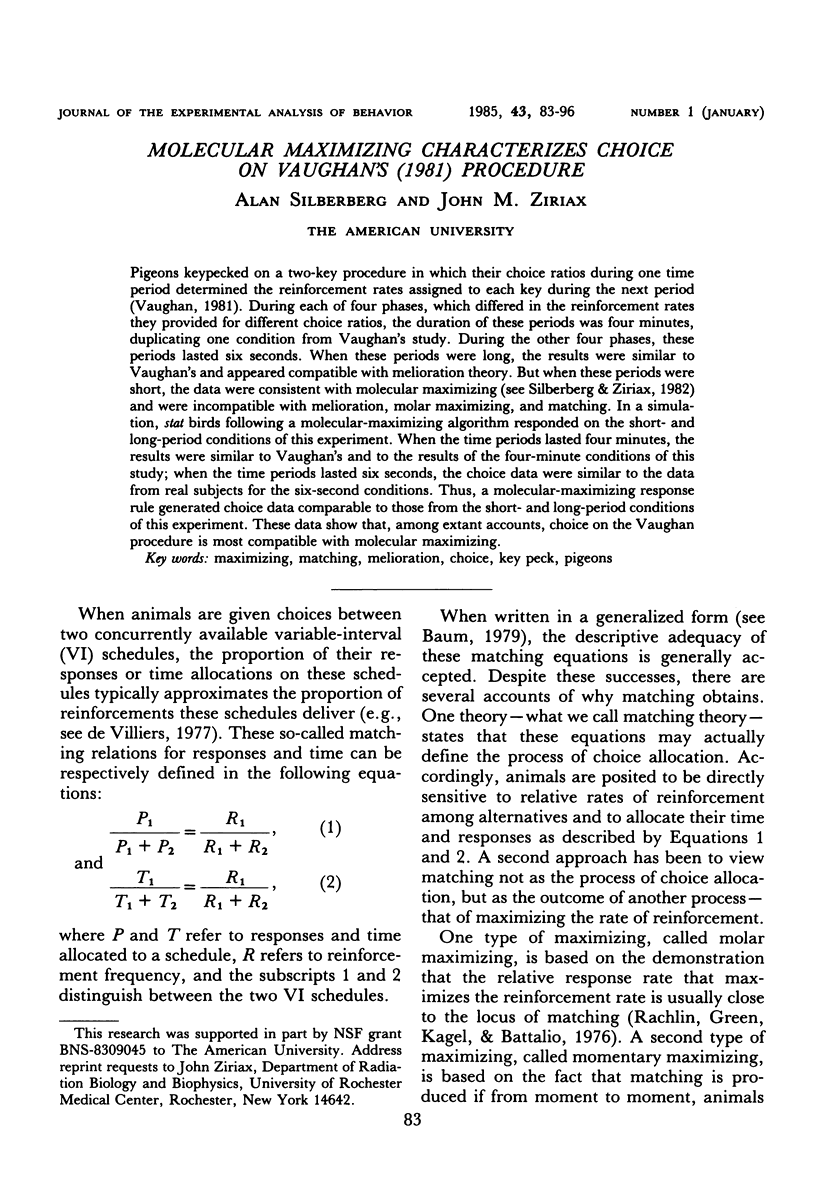
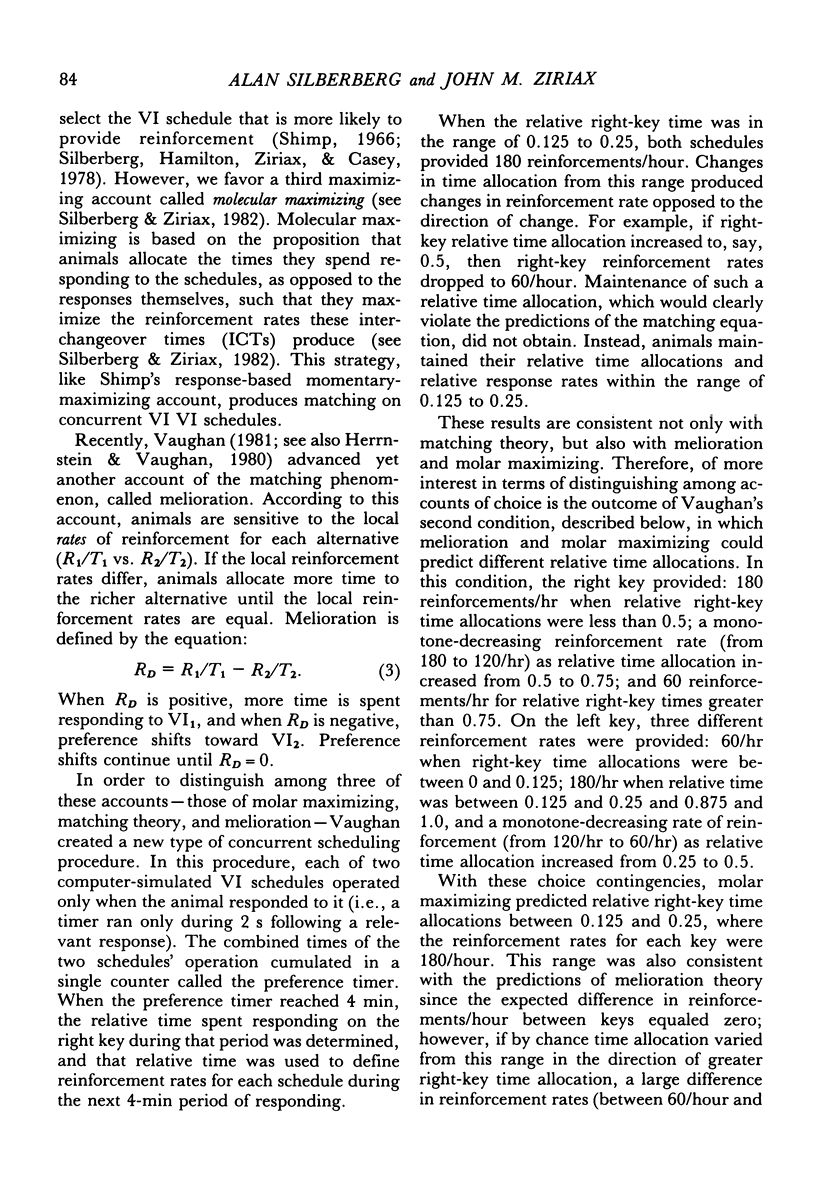
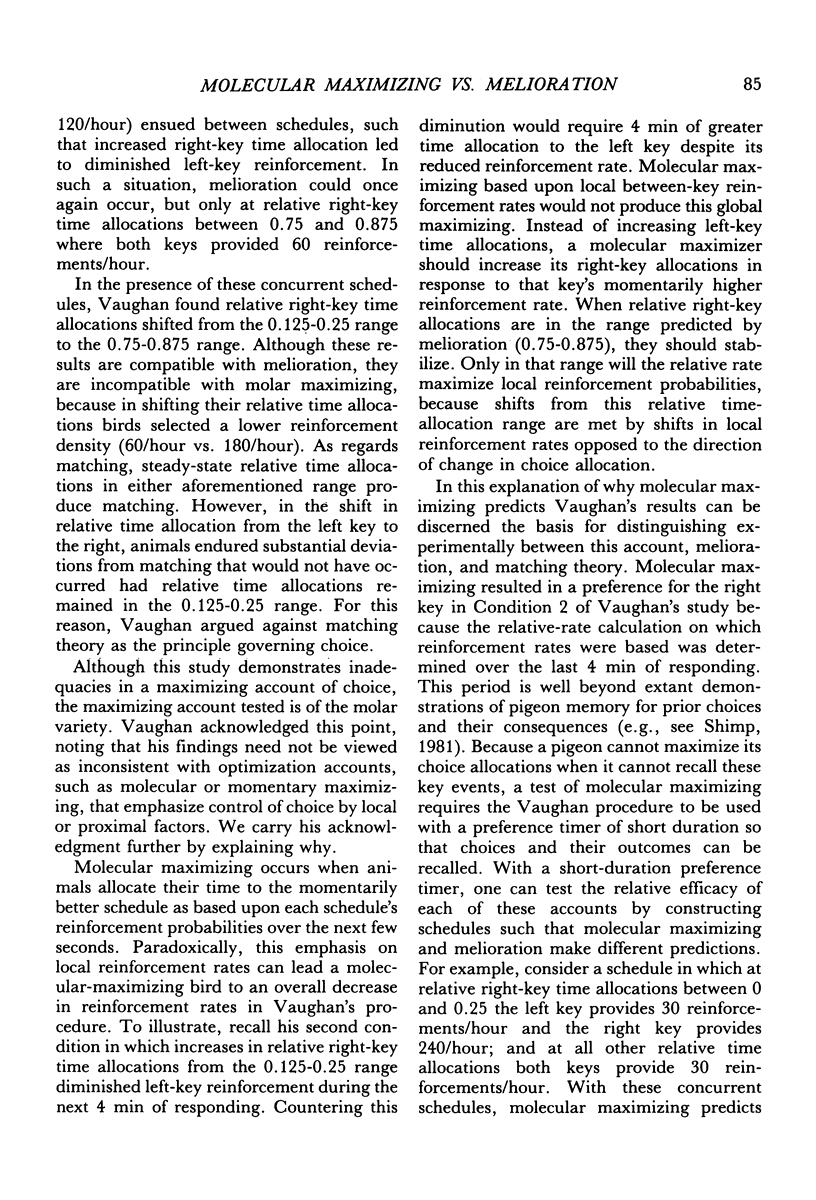
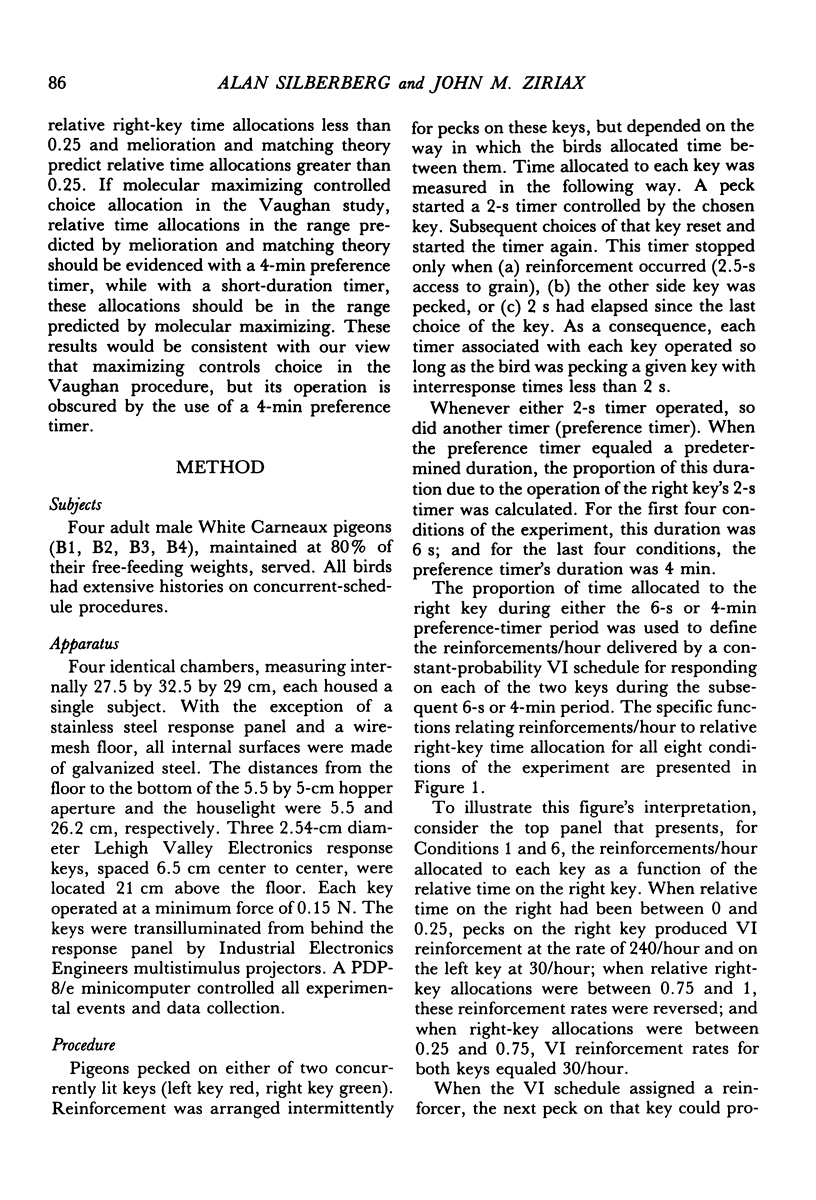
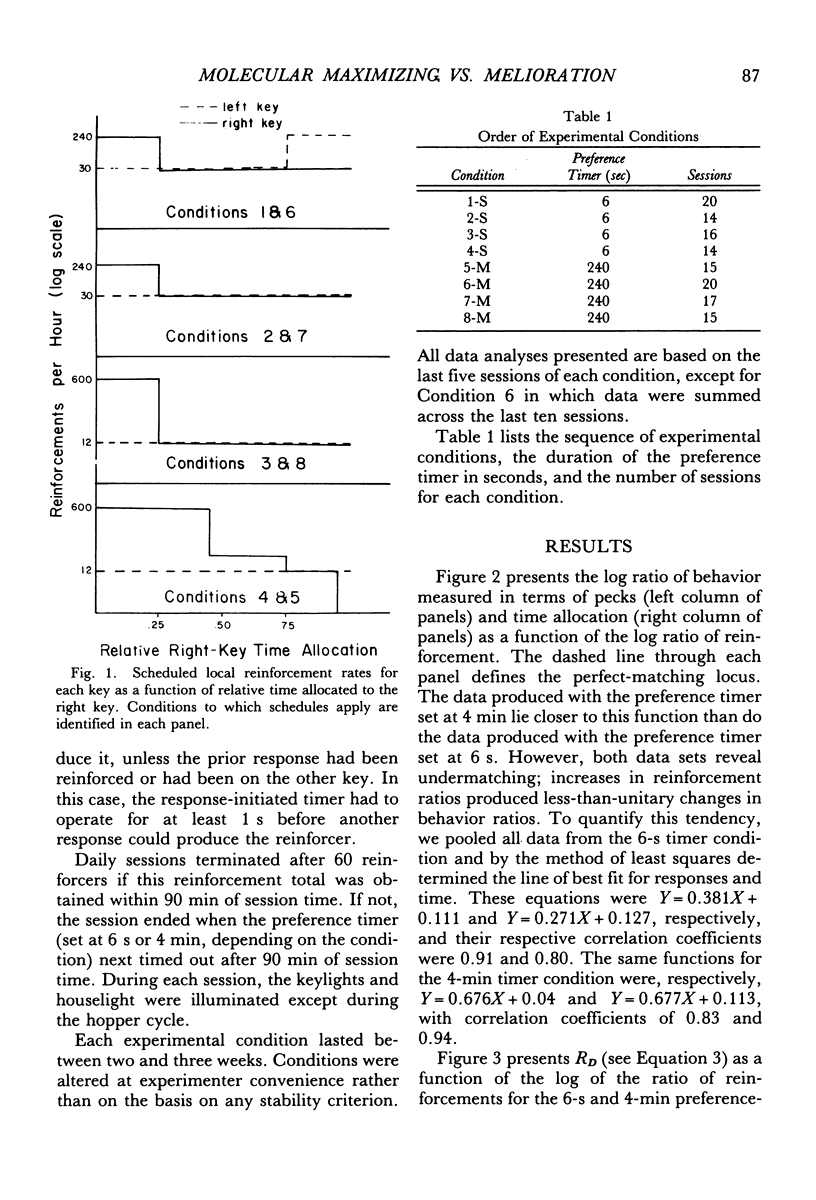
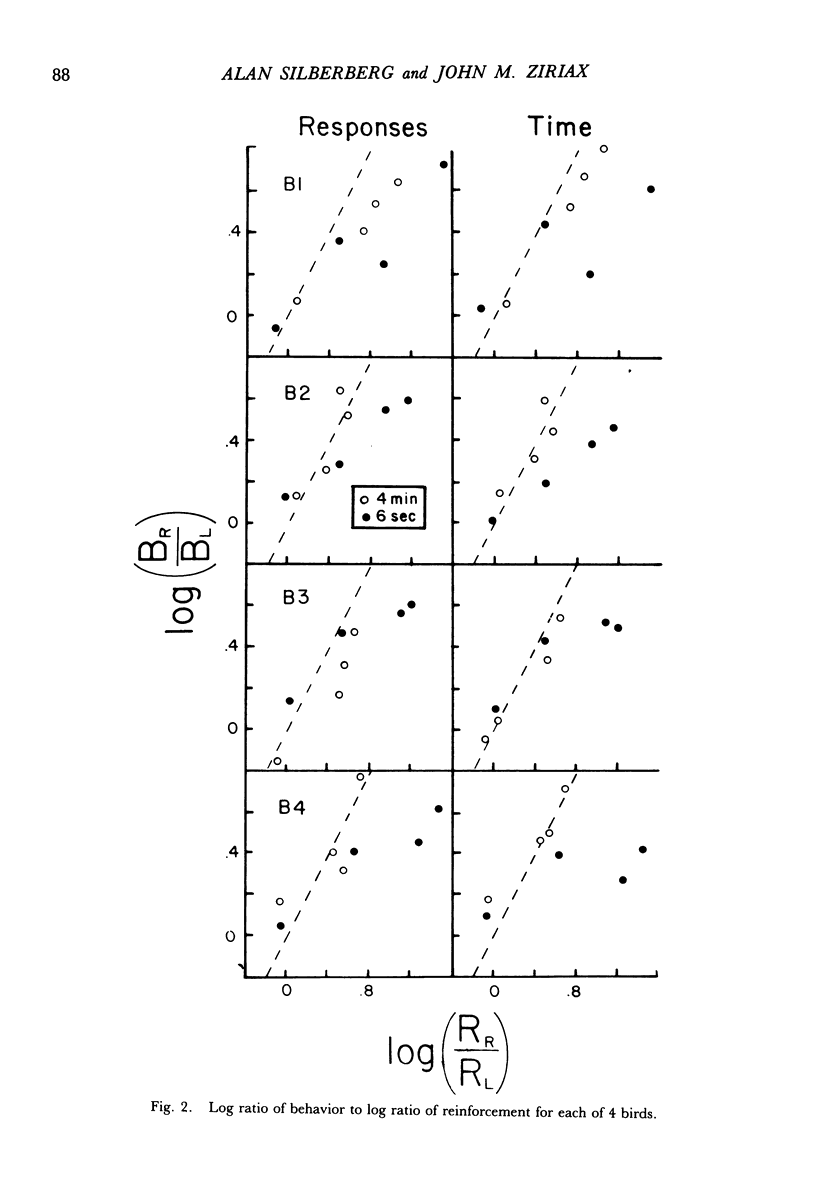
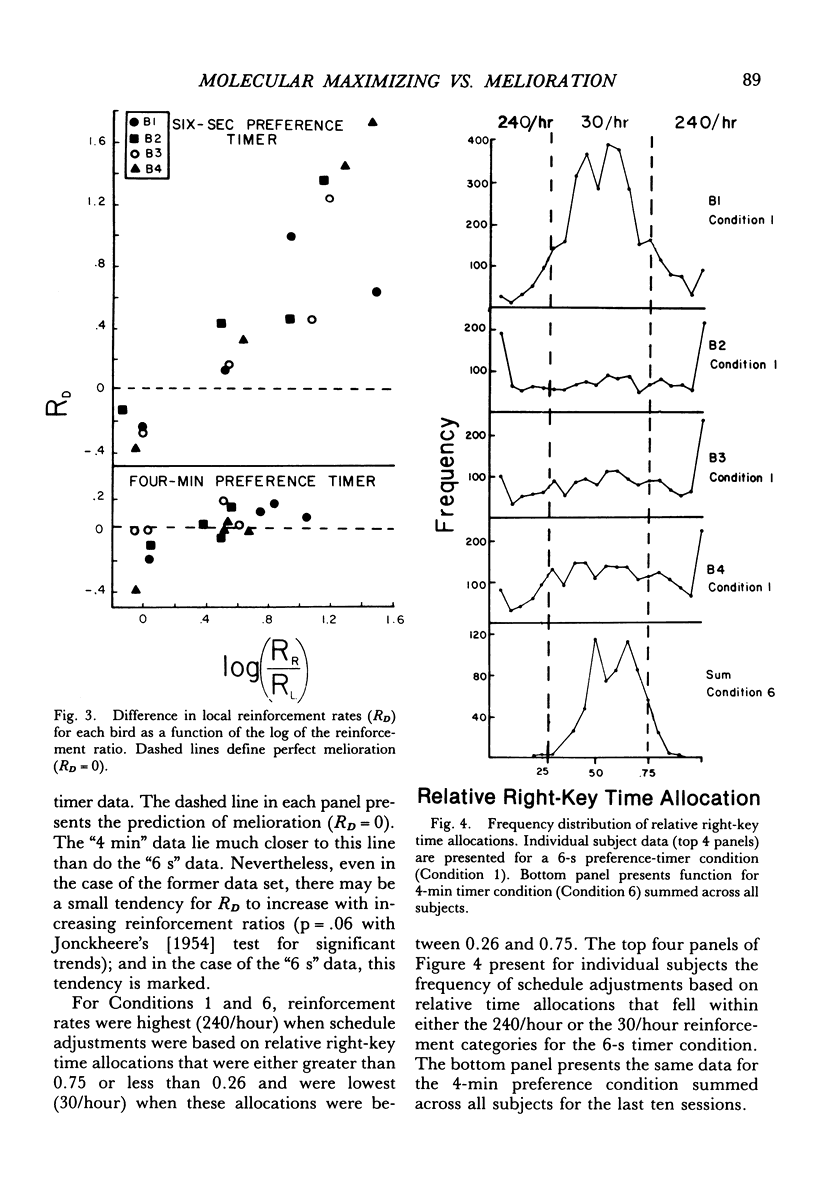
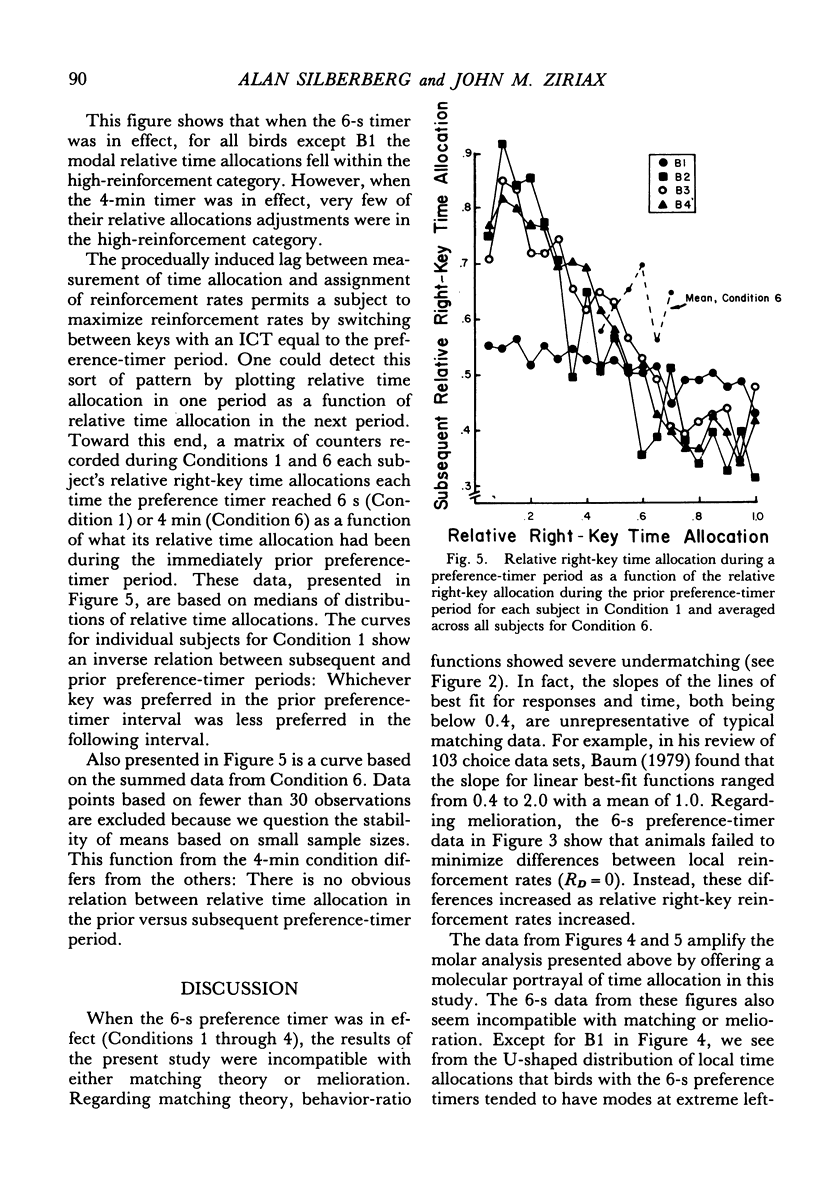
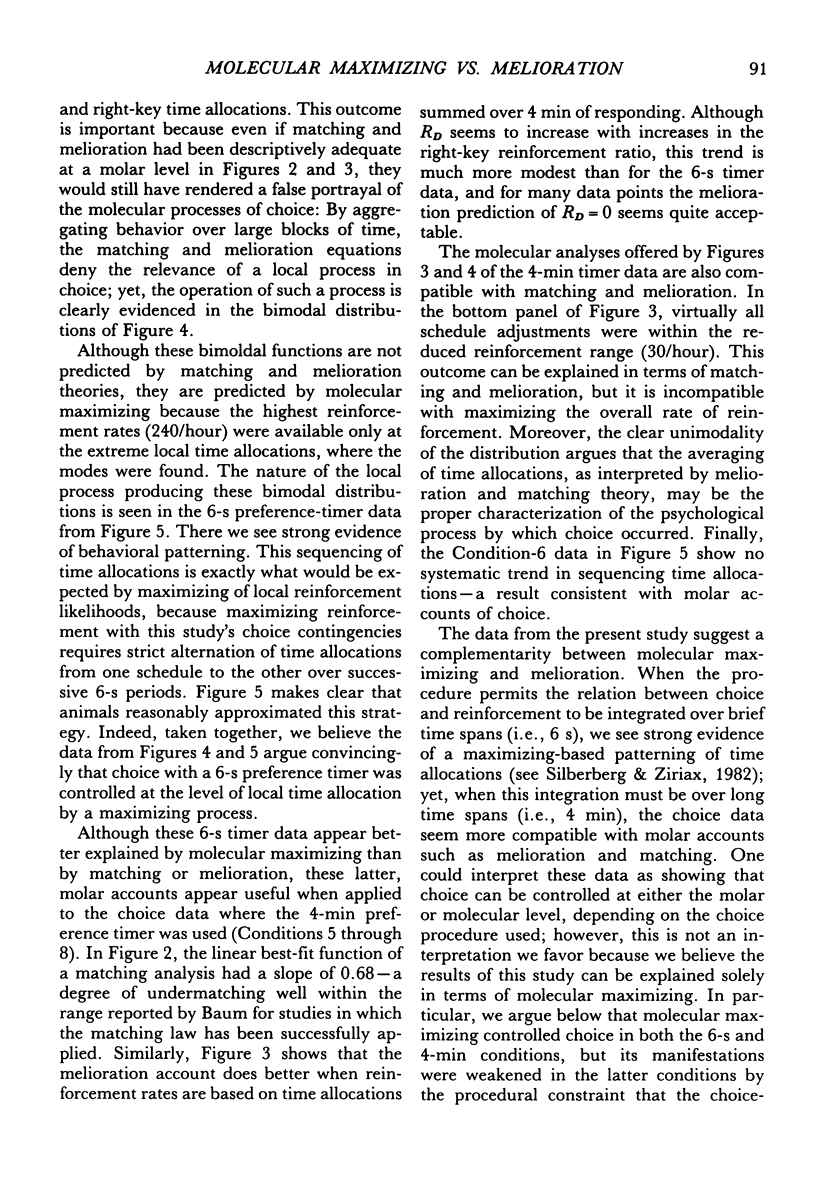
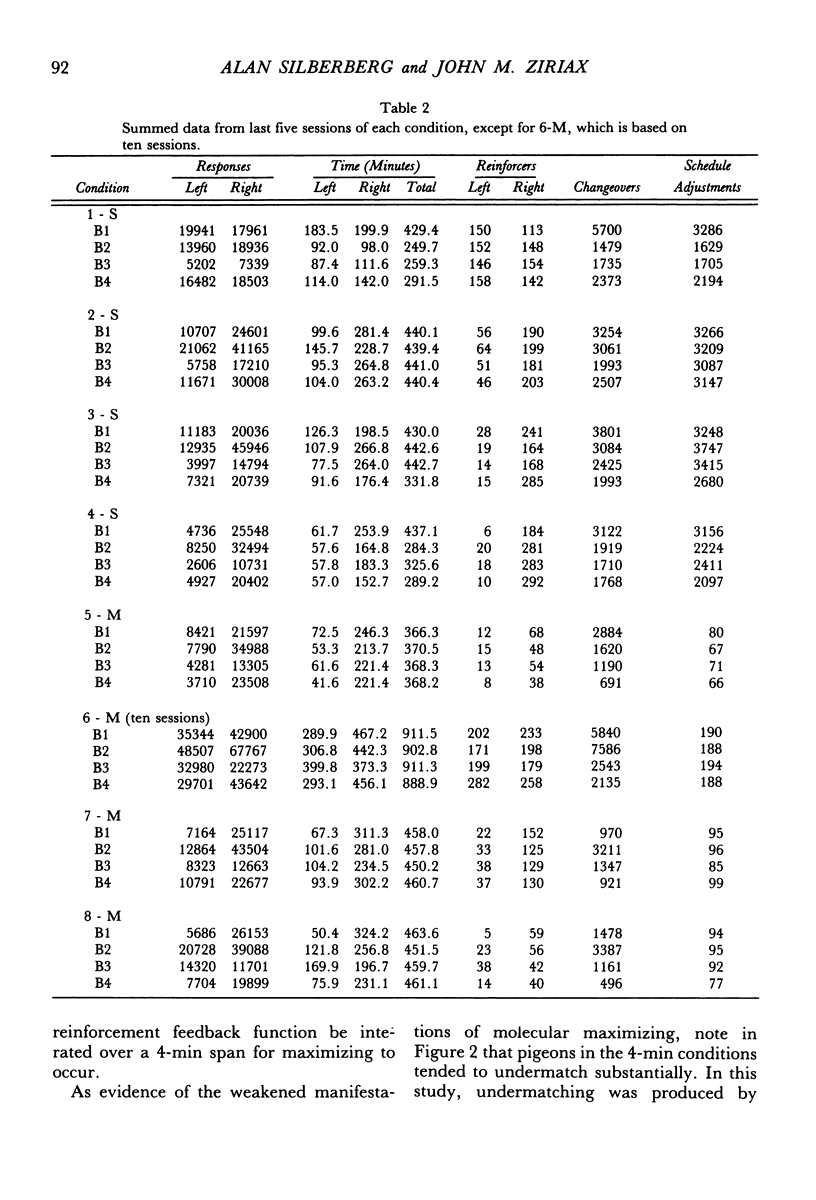
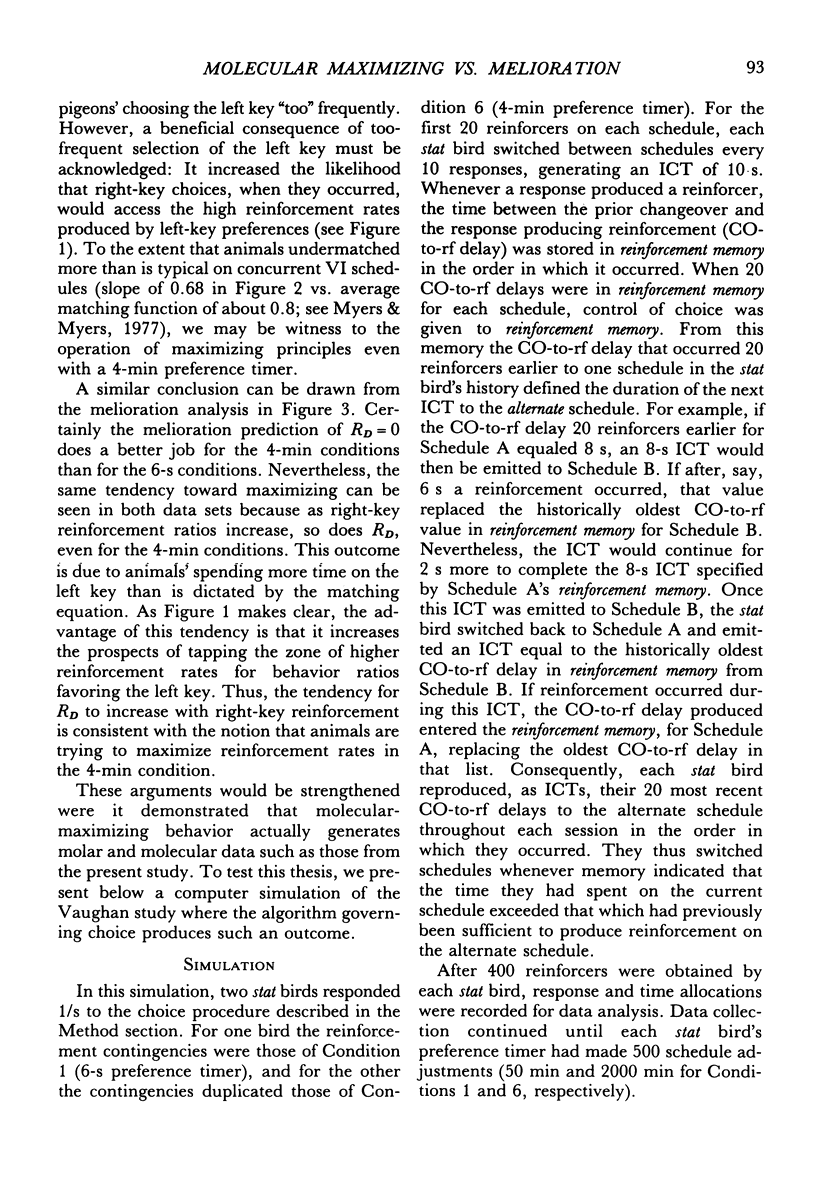
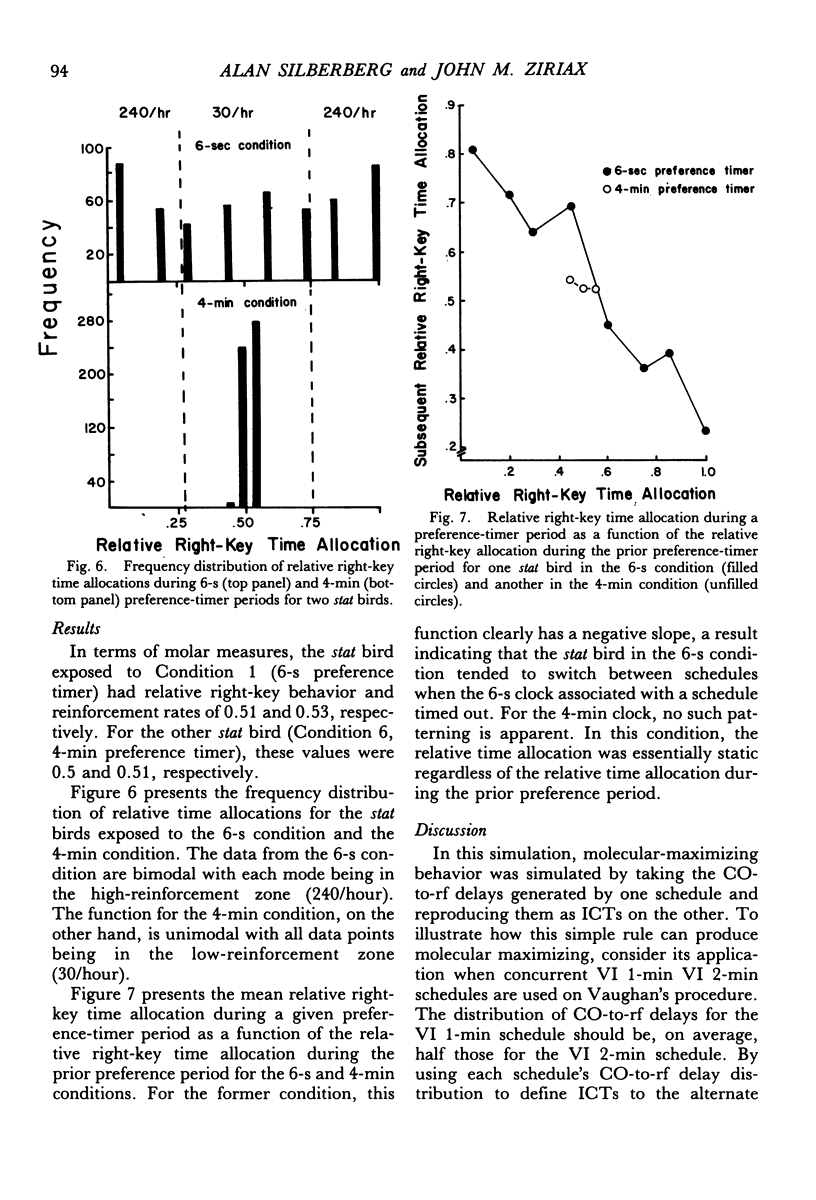
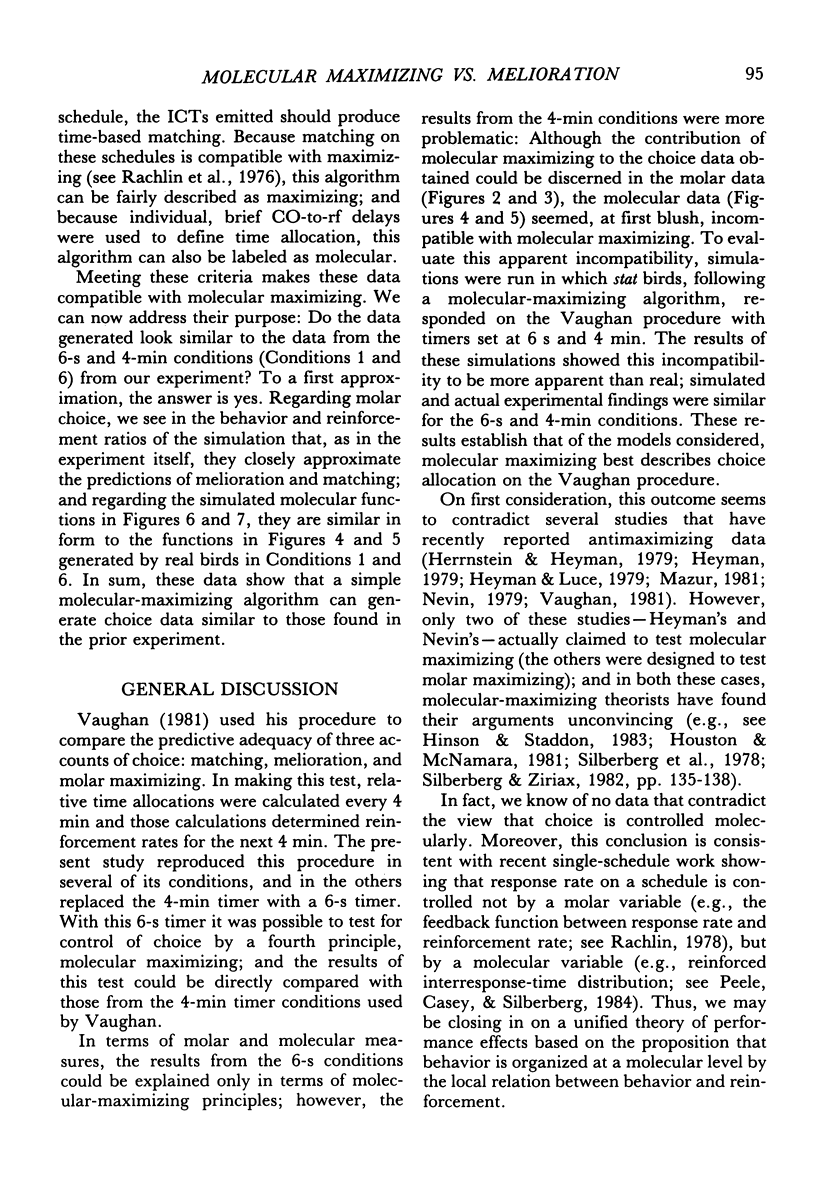
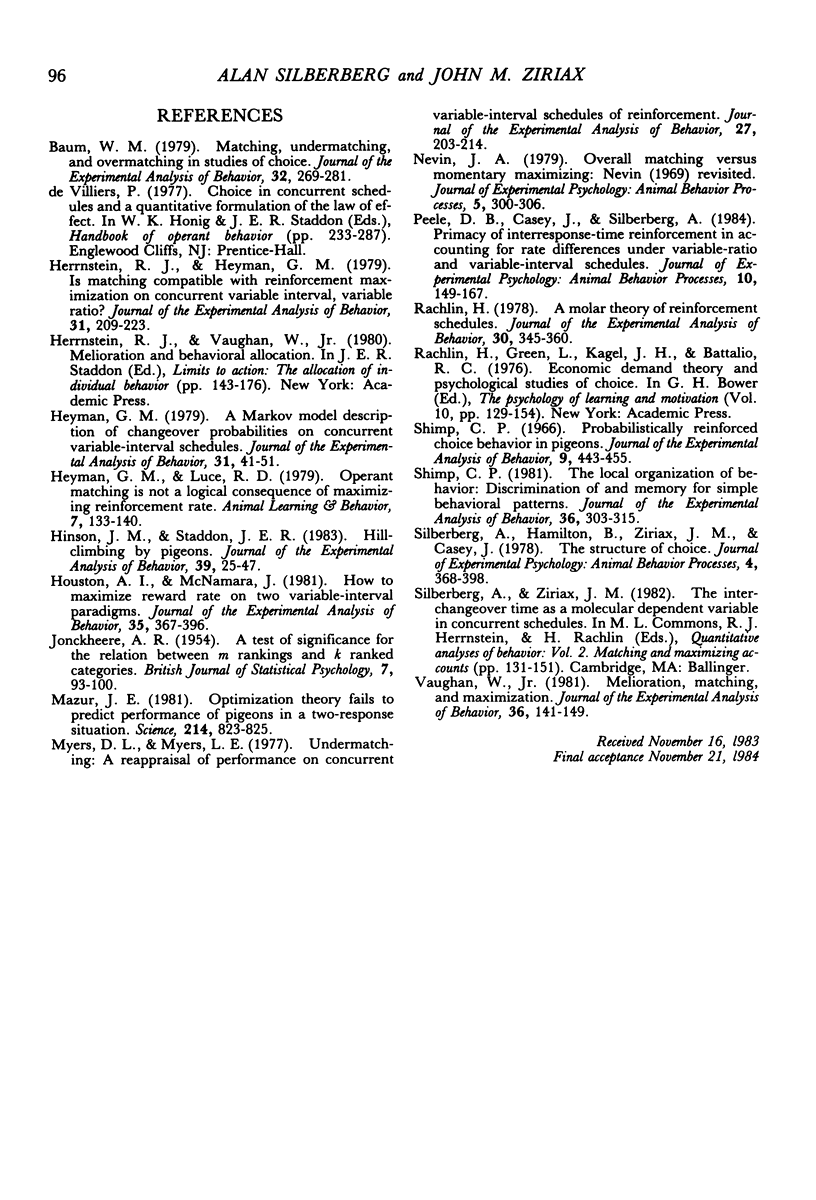
Selected References
These references are in PubMed. This may not be the complete list of references from this article.
- Baum W. M. Matching, undermatching, and overmatching in studies of choice. J Exp Anal Behav. 1979 Sep;32(2):269–281. doi: 10.1901/jeab.1979.32-269. [DOI] [PMC free article] [PubMed] [Google Scholar]
- Herrnstein R. J., Heyman G. M. Is matching compatible with reinforcement maximization on concurrent variable interval variable ratio? J Exp Anal Behav. 1979 Mar;31(2):209–223. doi: 10.1901/jeab.1979.31-209. [DOI] [PMC free article] [PubMed] [Google Scholar]
- Heyman G. M. A Markov model description of changeover probabilities on concurrent variable-interval schedules. J Exp Anal Behav. 1979 Jan;31(1):41–51. doi: 10.1901/jeab.1979.31-41. [DOI] [PMC free article] [PubMed] [Google Scholar]
- Hinson J. M., Staddon J. E. Hill-climbing by pigeons. J Exp Anal Behav. 1983 Jan;39(1):25–47. doi: 10.1901/jeab.1983.39-25. [DOI] [PMC free article] [PubMed] [Google Scholar]
- Houston A. I., McNamara J. How to maximize reward rate on two variable-interval paradigms. J Exp Anal Behav. 1981 May;35(3):367–396. doi: 10.1901/jeab.1981.35-367. [DOI] [PMC free article] [PubMed] [Google Scholar]
- Mazur J. E. Optimization theory fails to predict performance of pigeons in a two-response situation. Science. 1981 Nov 13;214(4522):823–825. doi: 10.1126/science.7292017. [DOI] [PubMed] [Google Scholar]
- Myers D. L., Myers L. E. Undermatching: a reappraisal of performance on concurrent variable-interval schedules of reinforcement. J Exp Anal Behav. 1977 Jan;27(1):203–214. doi: 10.1901/jeab.1977.27-203. [DOI] [PMC free article] [PubMed] [Google Scholar]
- Rachlin H. A molar theory of reinforcement schedules. J Exp Anal Behav. 1978 Nov;30(3):345–360. doi: 10.1901/jeab.1978.30-345. [DOI] [PMC free article] [PubMed] [Google Scholar]
- Shimp C. P. Probabilistically reinforced choice behavior in pigeons. J Exp Anal Behav. 1966 Jul;9(4):443–455. doi: 10.1901/jeab.1966.9-443. [DOI] [PMC free article] [PubMed] [Google Scholar]
- Shimp C. P. The local organization of behavior: discrimination of and memory for simple behavioral patterns. J Exp Anal Behav. 1981 Nov;36(3):303–315. doi: 10.1901/jeab.1981.36-303. [DOI] [PMC free article] [PubMed] [Google Scholar]
- Vaughan W. Melioration, matching, and maximization. J Exp Anal Behav. 1981 Sep;36(2):141–149. doi: 10.1901/jeab.1981.36-141. [DOI] [PMC free article] [PubMed] [Google Scholar]


